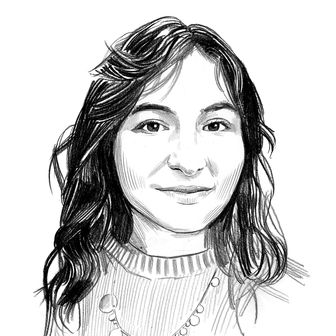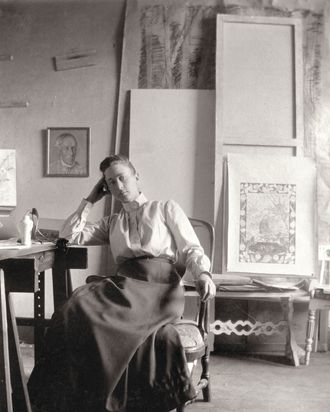
Before Kandinsky’s rhythmic compositions, Malevich’s black square, and Mondrian’s planes of primary color, a Swedish painter named Hilma af Klint produced abstract forms in her paintings as early as 1906, exactly 80 years before her rich, whimsical works became available to the public eye. Considered a “pioneer of abstraction,” she and four female artists formed a group called “the Five,” aiming to explore the many facets of the spiritual realm, and together practiced automatic drawing — the technique would become associated with André Breton and the Surrealist movement.
Af Klint saw herself as a medium through which unseen spiritual forces expressed themselves. Her fascination with the occult, embodied most prominently in a series of 193 works titled Paintings for the Temple, is a primary focus in the new book Hilma af Klint: Painting the Unseen, out this week from Koenig. Most of her canvasses in Paintings for the Temple are abstract, allegedly painted under the “commission” of a spirit-world leader named Ameliel.
Click ahead to see af Klint’s work, including flowers overlapping circles in bursts, graceful swans partially intertwined like yin and yang, and a spiral shell set against radiating blocks of color.
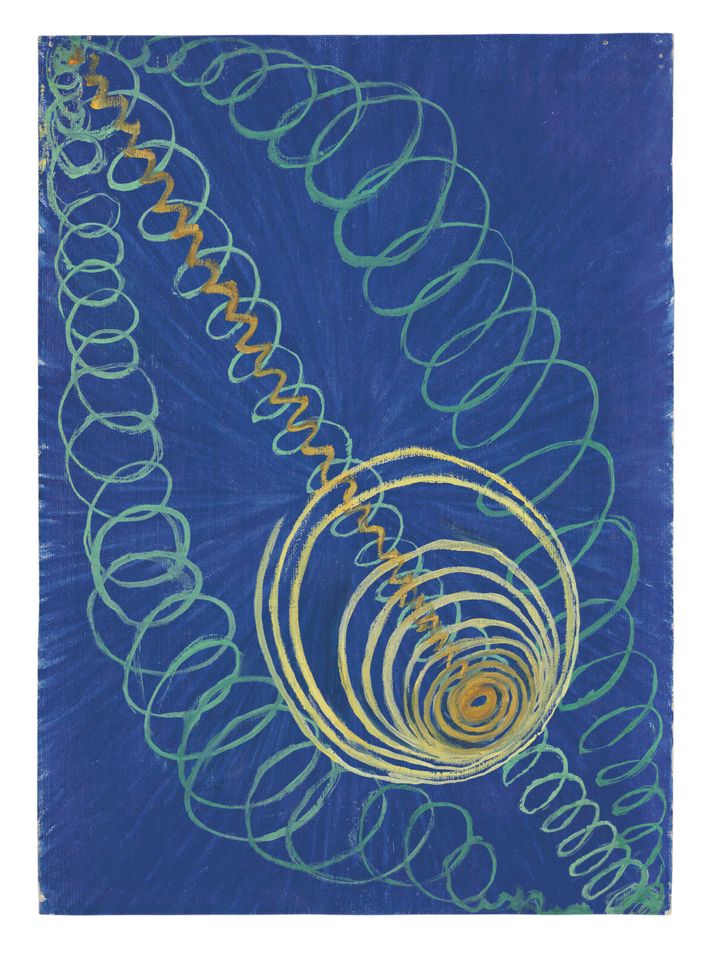
Primordial Chaos, No. 16, Group I, 1906-7.
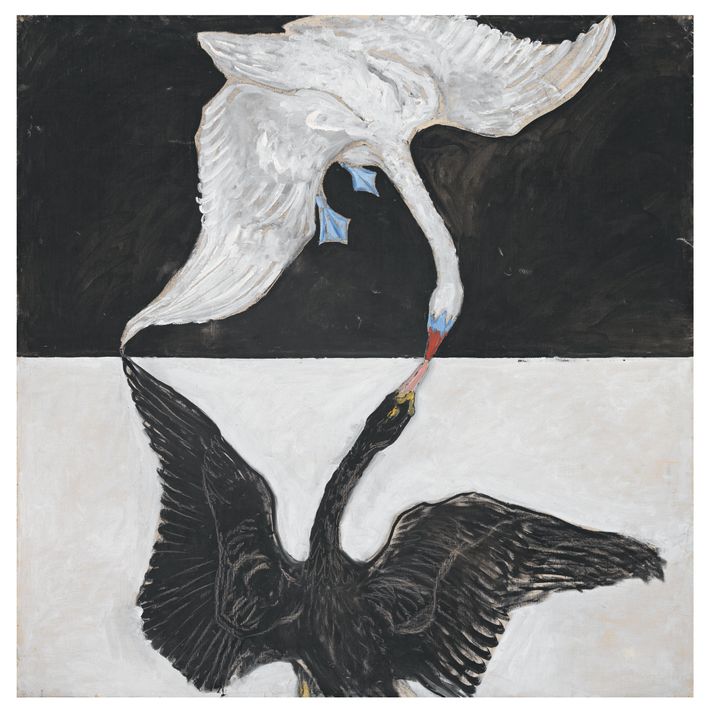
The Swan, No. 1, Group IX/SUW, 1914-15.
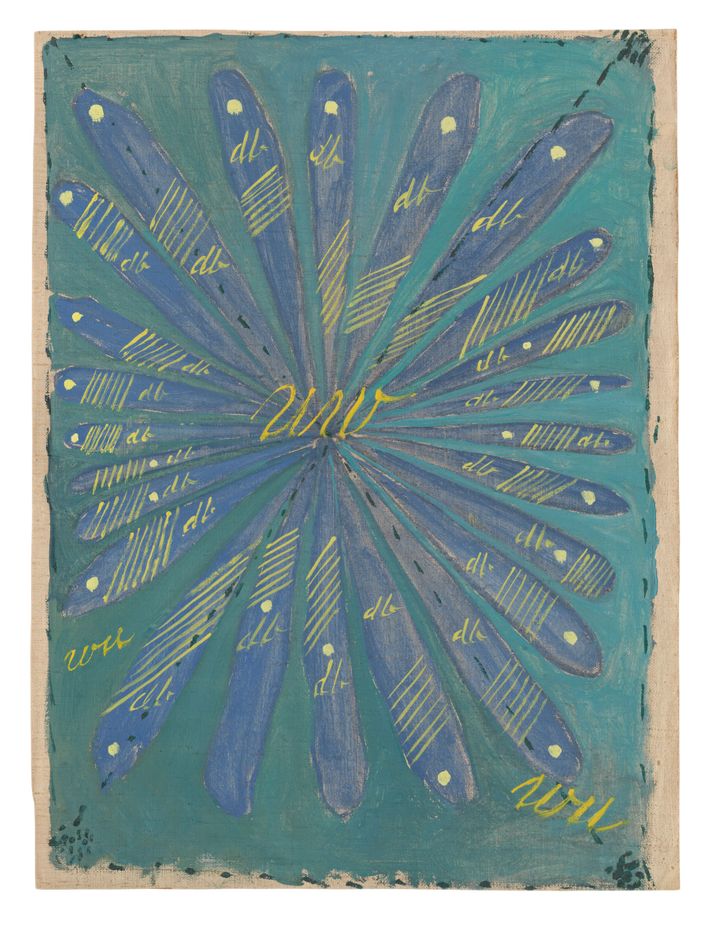
Primordial Chaos, No. 25, Group I, 1906-7.
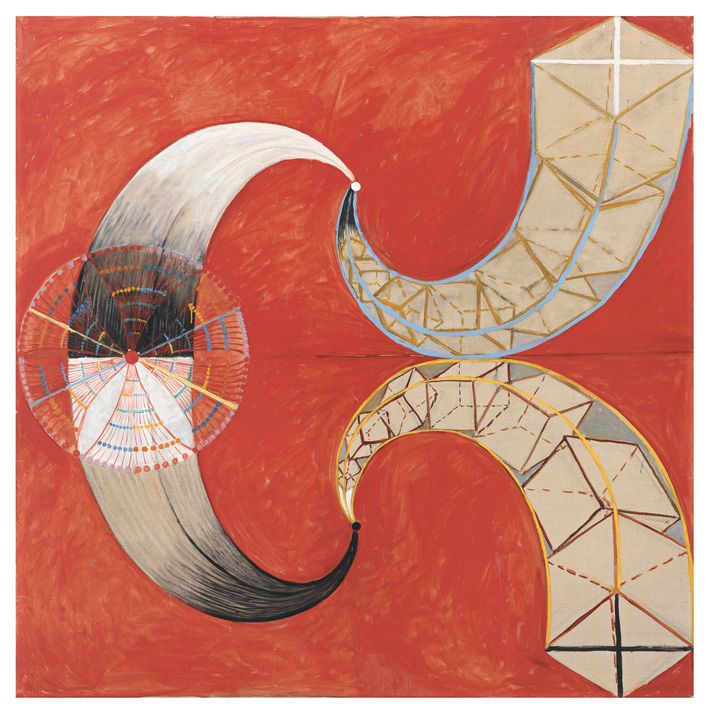
The Swan, No. 9, Group IX/SUW, 1914-15.
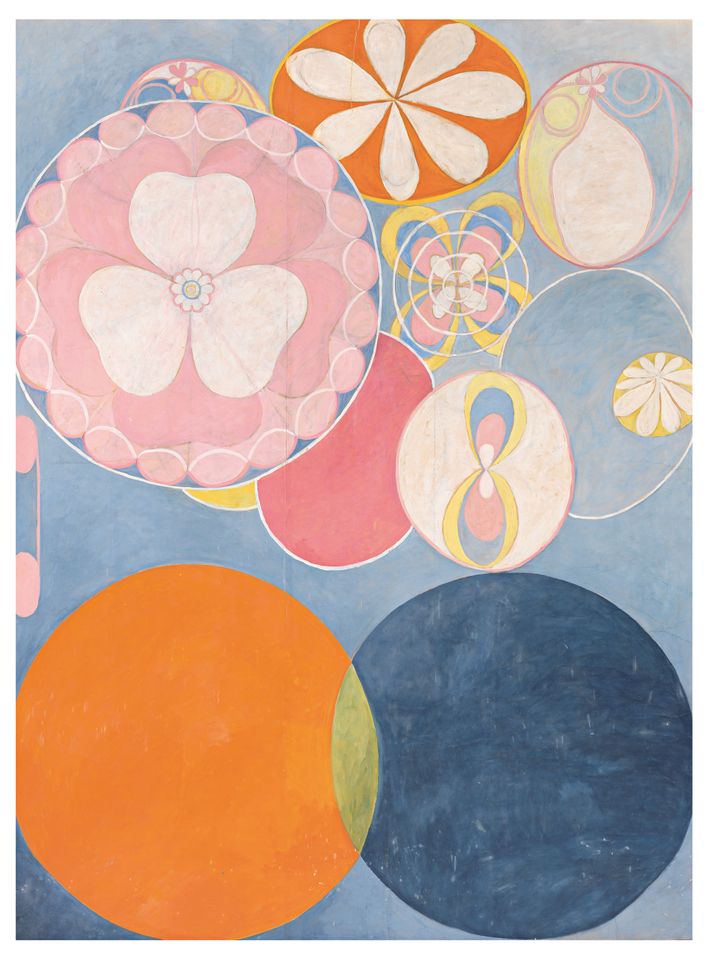
The Ten Largest, No. 2, Childhood, Group IV, 1907.
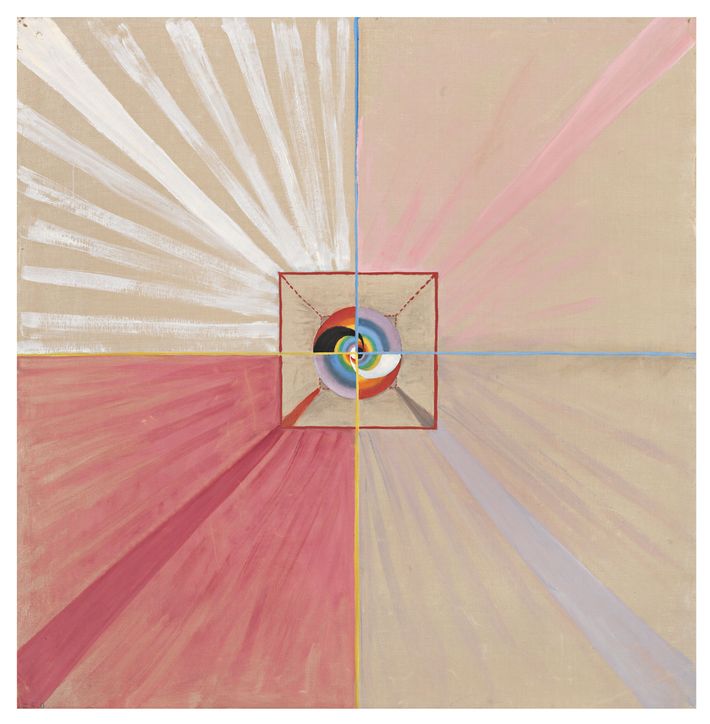
The Swan, No. II, Group IX/SUW, 1914-15.
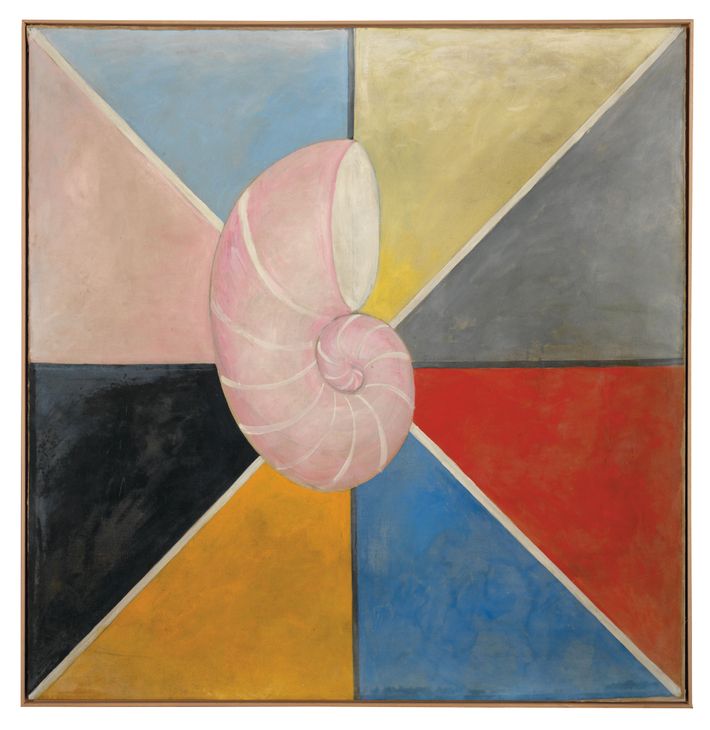
The Swan, No. 20, Group IX/SUW, 1914-15.
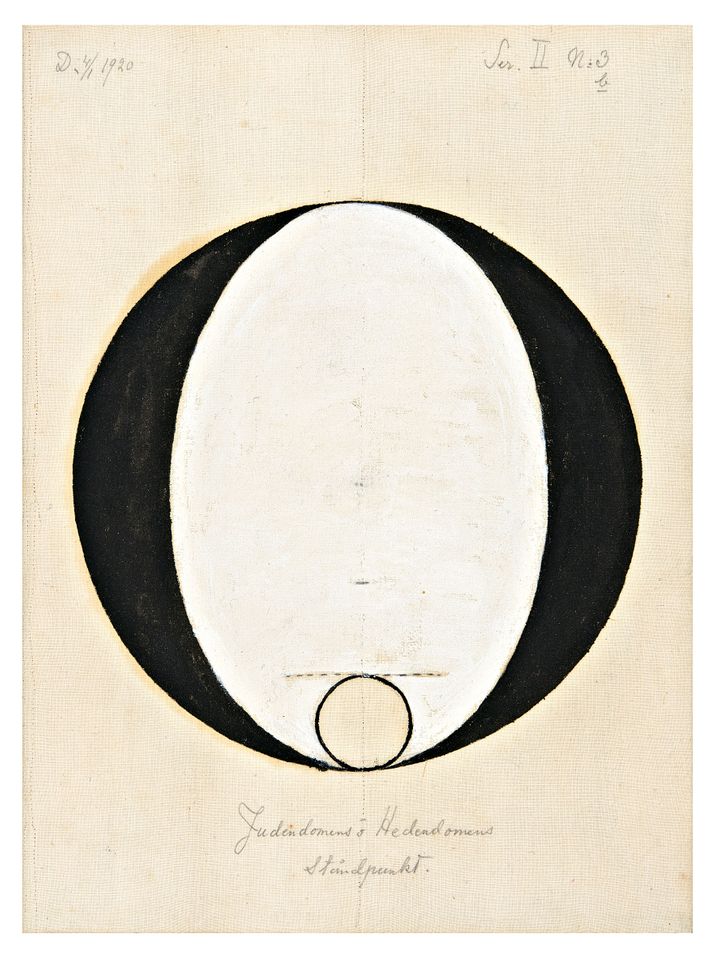
The Standpoints of Judaism and Heathendom, No. 3b, 1920.
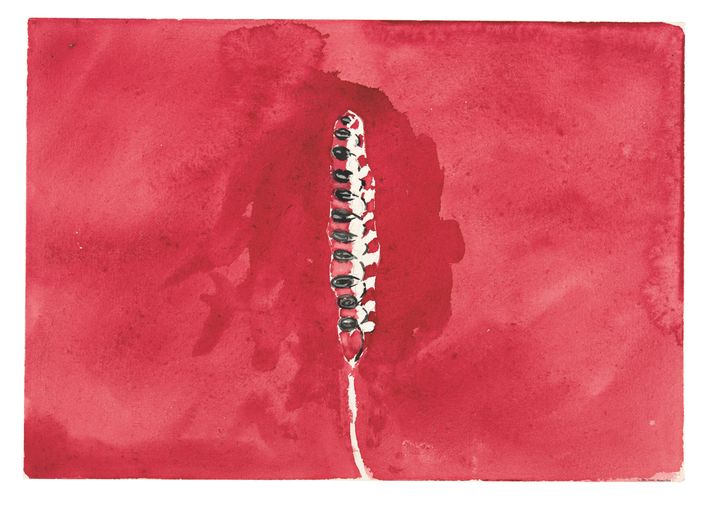
Earl of Grain, 1922.
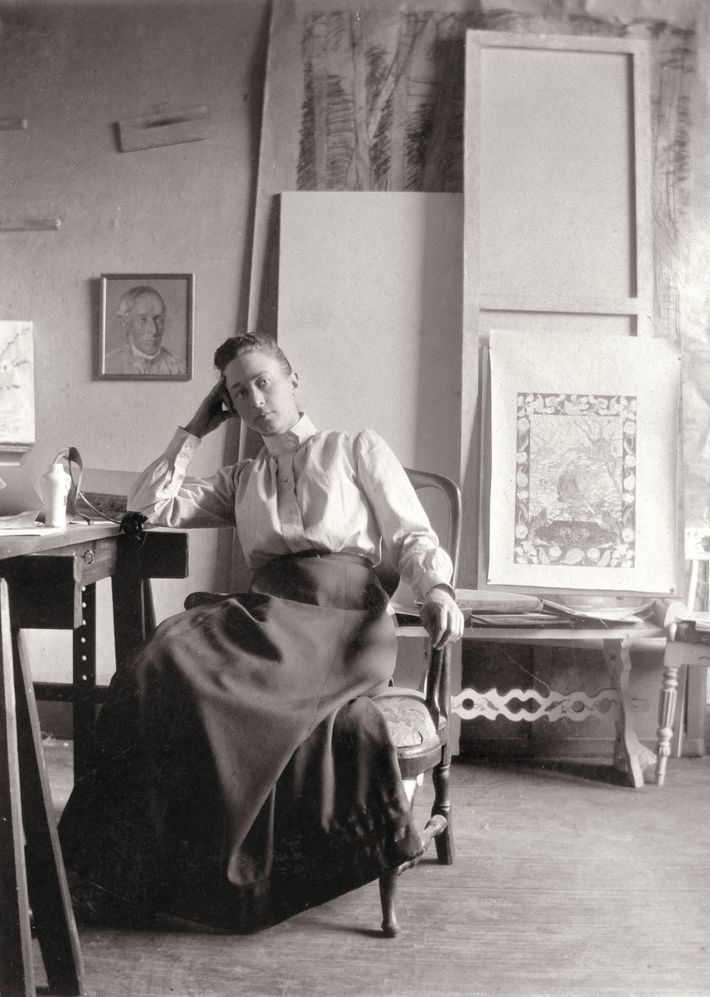
Hilma af Klint in her studio at Hamngatan, Stockholm, circa 1895.


